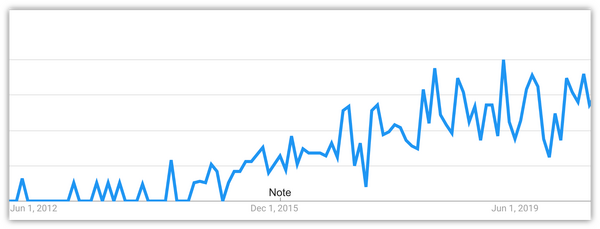What Does the Science Say About Microlearning?

“What, exactly, is microlearning? Does it work? Is this just the next popular trend, or is it supported by science?” These are some of the questions we hear from prospects about microlearning, but what many people don’t know is that microlearning has been around for a very long time—and precisely because it works so well.
Google Trends for Microlearning

If you look at Google trends for the term “microlearning,” you see that its usage takes off sometime around 2015 and grows steadily over the years. That trend reflects a growing interest in microlearning formats. Many of those formats have been around before the label, however—and so microlearning has really been around for decades. For example, HSI has been providing and developing short-form training content...and those certainly count as microlearning!
So What is Microlearning?
Microlearning is simply the process of delivering bite-sized content to learners that they can consume all at once and then apply immediately.
There’s a growing body of research showing that shorter, more focused content is more effective than traditional, long-form training (in the form of lectures, off-campus retreats, and long compliance videos). We’ve known for a long time that it’s far easier to educate and engage employees with shorter bursts of content. Science supports this approach. You can read more in our white paper on The Science of Microlearning.
Example: Distraction Hampers Long-Form Learning
We can more easily see the challenges with long-form content just by reflecting on how often we’re distracted throughout the day.
A study from the University of California at Irvine followed 36 corporate employees (project managers, developers, engineers, and financial analysts) for three days. On average, those employees were interrupted every 11 minutes. The time it took for that worker to get back on track after the interrupted task? 25 minutes.
If an employee is getting interrupted roughly five times in one hour, and it takes at least 25 for them to get their focus back, how likely are they to retain anything from a 60-minute video?
So How Can Microlearning Best Be Used to Train Employees?
Shorter content is at the heart of microlearning, but changing the way your organization does training so that it can make the best use of microlearning takes some time and effort. As a first step, you might need to convince other people in your organization that there will be a solid return on that investment.
Our white paper, “The Science of Microlearning” goes in depth into what research has uncovered about microlearning and how it benefits both employees and company learning cultures. It covers:
- Just how disruptive daily distractions are
- What the ideal length of a video is to maximize attention and engagement
- How employees typically react to microlearning
- Why microlearning is more conducive to employee productivity (and less costly)
- Best practices for creating content and training reinforcement tools
Adapting your ideas around training and learning is sometimes just as complex and challenging as the training itself. So we also take some time to do a little myth-busting when it comes to the science of the brain and how our attention works. When you understand the actual science, it can form a solid basis for designing effective programs—and you won’t have to go back to the drawing board again and again.
Additional Resources
- What is Microlearning?
- Not All Microlearning is Created Equal
- 7 Ways to Revitalize Your Employee Training Program



